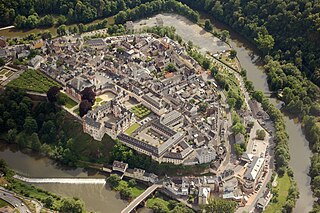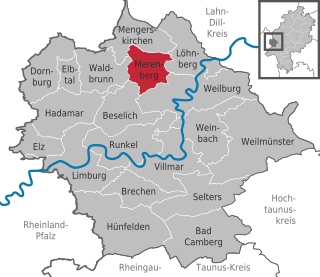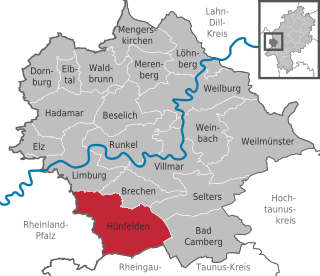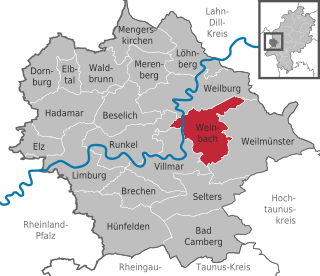
Limburg an der Lahn is the district seat of Limburg-Weilburg in Hesse, Germany.

Weilburg is, with just under 13,000 inhabitants, the third biggest town in Limburg-Weilburg district in Hesse, Germany, after Limburg an der Lahn and Bad Camberg.

Leun is a small town in the Lahn-Dill-Kreis in Hesse, Germany.

Selters (Taunus) is a municipality with 8,000 inhabitants north of Bad Camberg in Limburg-Weilburg district in Hesse, Germany.

Grävenwiesbach is a municipality in the Hochtaunuskreis in Hesse, Germany.

Merenberg is a municipality in Limburg-Weilburg district in Hesse, Germany.

Solms is a town west of Wetzlar in the Lahn-Dill-Kreis, Hessen, Germany with around 13,500 inhabitants. In the constituent community of Burgsolms once stood the ancestral castle of the Counts and Princes of Solms.

Braunfels is a town in the Lahn-Dill-Kreis in Hesse, Germany. It is located on the German Timber-Frame Road.

Hünfelden is a municipality in Limburg-Weilburg district in Hesse, Germany. Hünfelden lies on the Hühnerstraße, an historic part of Bundesstraße 417.

Greifenstein is a municipality in the Lahn-Dill-Kreis in Hesse, Germany. Its administrative seat is Beilstein. Greifenstein covers 67.43 km2 on the eastern slope of the Westerwald range. It was named for the castle of the same name in the constituent community of the same name. This is the site of the German Bell Museum, which holds about 50 bells that show the historical development of bell pouring and manufacture.

Weinbach is a municipality in Limburg-Weilburg district in Hesse, Germany.

Waldsolms is a municipality located in the Lahn-Dill-Kreis in Hesse, Germany.

Runkel is a town on the river Lahn in Limburg-Weilburg district in Hesse, Germany.

Weilmünster is a municipality in Limburg-Weilburg district in Hesse, Germany.

Brechen is a municipality in Limburg-Weilburg district in Hesse, Germany.

Selters is a village in the district Limburg-Weilburg, Hesse, Germany. It is situated at the Taunus side of the river Lahn and belongs to the municipality Löhnberg. The village has a total population of 319.

Dornburg is a municipality in the Westerwald in Limburg-Weilburg district in Hesse, Germany.

Elbtal is a municipality in Limburg-Weilburg district in Hesse, Germany.

Mengerskirchen is a municipality in Limburg-Weilburg district in Hesse, Germany.

Villmar is a market village and municipality in the Limburg-Weilburg district in Hesse, Germany. The community is the centre for quarrying and processing the so-called Lahn Marble.
























